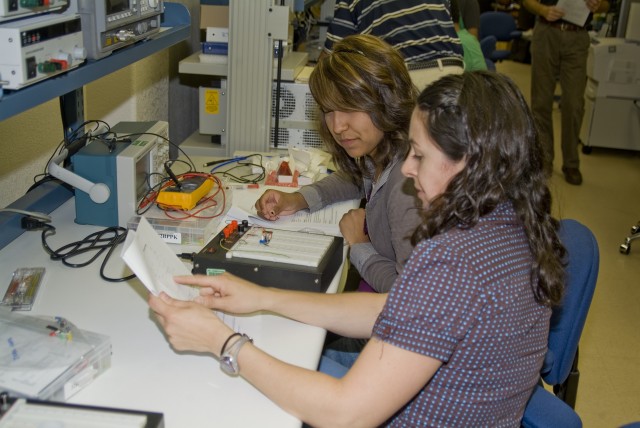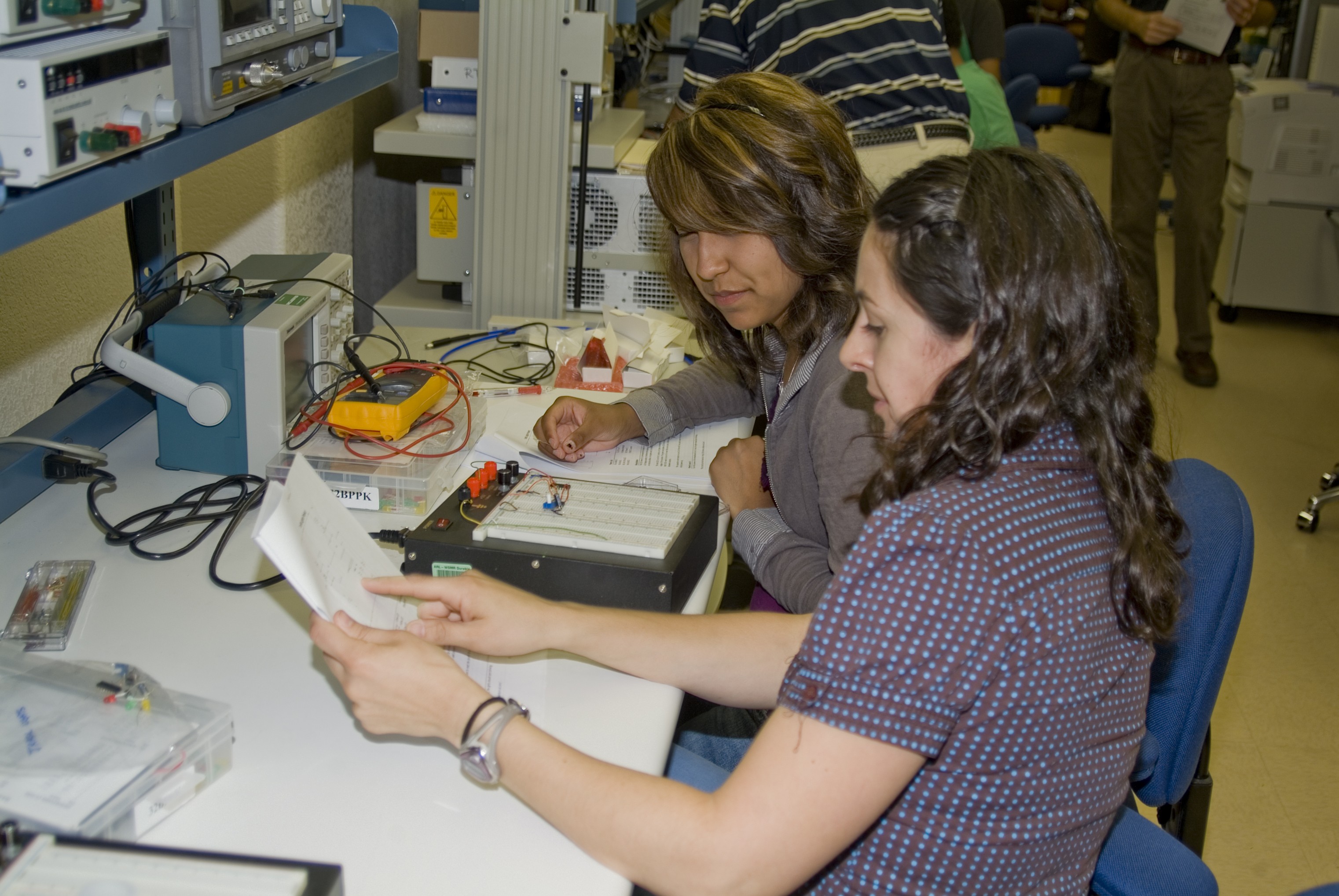
New Mexico high school students are receiving hands-on instruction in science and engineering from some of the Army's top scientists at White Sands Missile Range.
Forty-four students and four teachers from Las Cruces area high schools came to WSMR for a week to participate in the Army Research Lab's educational program: Gains in Mathematics and Science.
The goal of the GEMS program is to encourage students to pursue further education in the sciences by exposing them to the various scientific fields that the Army uses to develop new systems or support testing. "What we're trying to teach is that this is for the Soldier, we're not just doing this for ourselves," said Thomas Maxwell, an electrical engineer and GEMS coordinator with ARL.
While on WSMR the students attend classes about rockets, optics, robotics, radios, antennas, probability and statistics, computers, and electrical design. Each block of instruction includes a guided tour of an advanced test or research facility, a demonstration of Army technology, or hands-on laboratory style class where students can actually build and test their own devices.
Some classes combined all three elements, such as the FM Radio class. This class takes students to ARL's test range where they learn about radios. Next, they build their own small FM radio transmitters, which they then calibrate and test. The students also receive a demonstration on how some of the countermeasure systems ARL helped develop, which Soldiers are currently using in theater, affect the radios. Maxwell said the idea is for students to not only learn about the system, but actually build something themselves, see it work, and see how it applies to what the military is doing today. This approach to teaching is something that the students find very effective, as the small class size allows for hands-on activities that they can't do in normal classes at school. "I learn more by doing rather than reading," said GEMS student Johnny ray Picazo as he tested a small FM radio he built in one of the classes.
Other blocks of instruction had the students building simple electronics under the guidance of ARL engineers. "We teach them about the different components: resistors, integrated circuits, light emitting diodes; then we let them use those components to build several circuits of their own," Maxwell said. By allowing the students to work directly with Army scientists and engineers on the various projects, the students are able to learn about things that might normally be too advanced for a student to learn in a typical high school classroom. "These are the same type of (circuit design) print outs you'd see in college," Maxwell said. Branching out beyond just the Army's requirements, this year's program also included a tour of the Navy's Desert Ship test complex.
Not only do the students get time with the scientists and engineers who provide the instruction, but also with Soldiers and advanced systems and equipment that they normally would not have access to, such as high speed cameras, infrared imagers and ARL's electromagnetic vulnerability assessment facility, a facility equipped with special rooms that can block out or isolate electromagnetic waves. "The kids are getting to see it. Most people on WSMR, much less the general public, don't ever get to see inside a facility like that," Maxwell said. The students also got a chance to see military hardware used by Soldiers and regularly tested at WSMR. "The Abrams (tank) is something that you won't see in a high school classroom," Maxwell said.
The instructors for the various classes consider the education of what could be future Army scientists to be a very important job. "Our organizations and our Division Chief, Richard Flores, take this very seriously. We've all volunteered, no one has been assigned to do this," Maxwell said.

Social Sharing